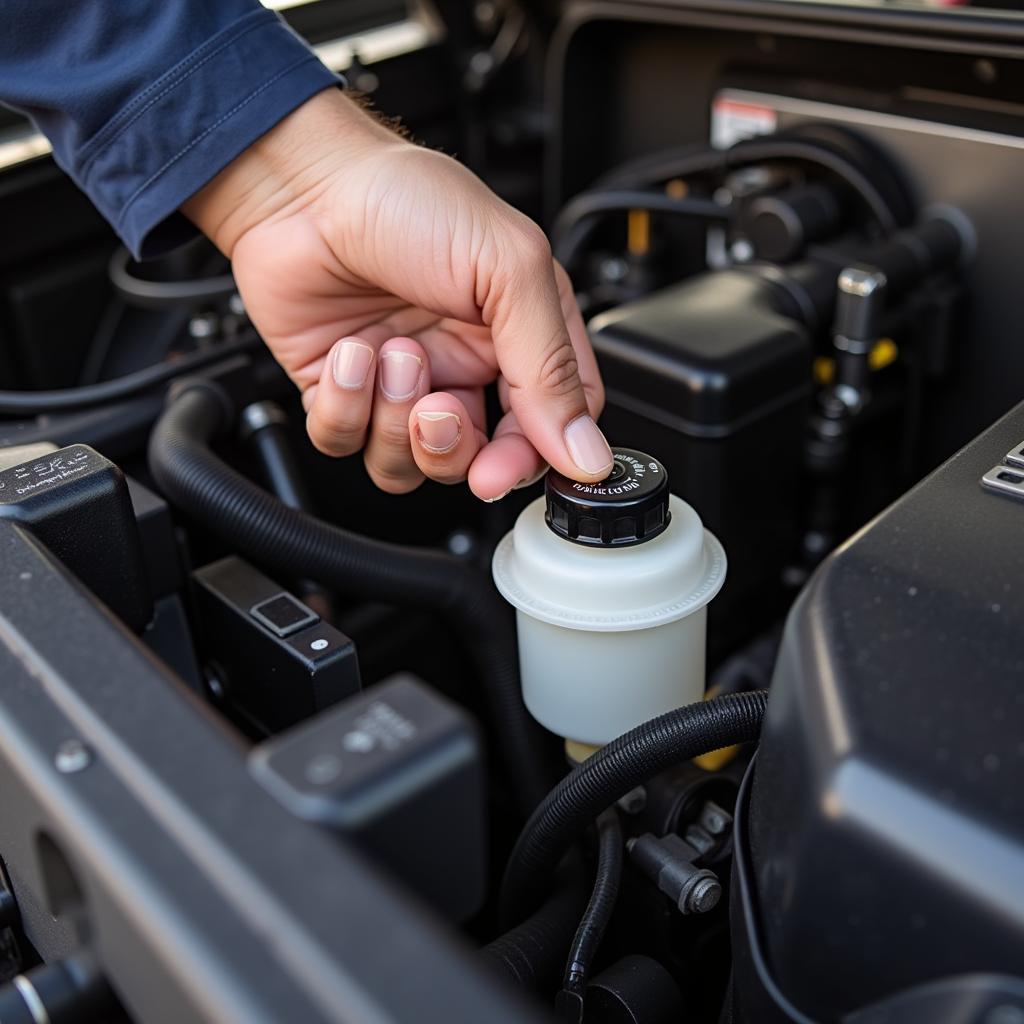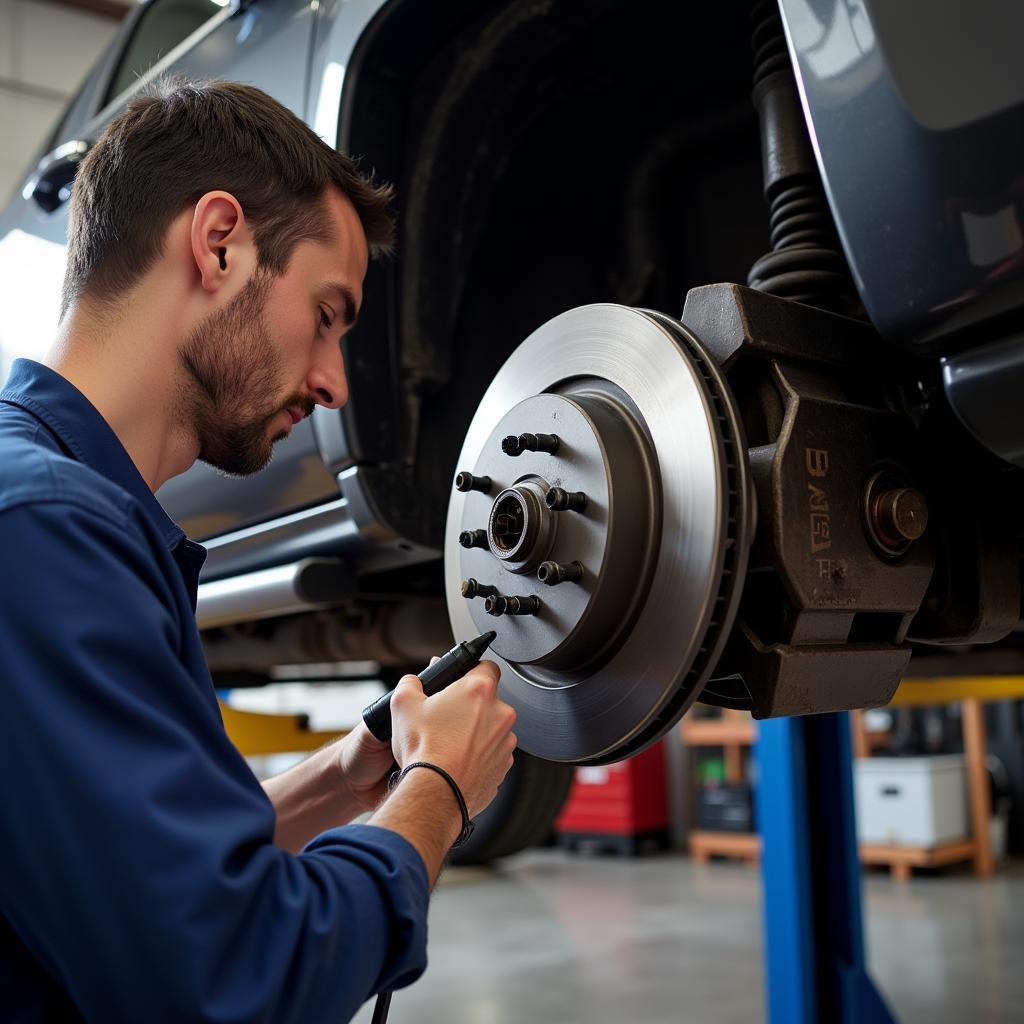The “Service Brake System” warning message flashing on your Silverado Sierra dashboard can be an unwelcome sight. This message indicates a potential issue with your truck’s braking system, requiring immediate attention. While it can be a concerning situation, understanding the common causes and knowing how to troubleshoot the problem can save you time, money, and potential safety hazards.
This comprehensive guide will walk you through the potential causes of a “Service Brake System” warning on your Silverado Sierra, how to diagnose the issue, and the steps you can take to get your truck back on the road safely.
Understanding the “Service Brake System” Warning
Your Silverado Sierra is equipped with sophisticated sensors that constantly monitor the health of your braking system. When these sensors detect an abnormality, the “Service Brake System” warning is triggered on the dashboard. This warning could indicate a range of issues, from minor sensor malfunctions to more serious problems with the hydraulic system or brake components.
Ignoring this warning could lead to reduced braking performance, increasing the risk of an accident. Therefore, it’s crucial to address the issue promptly.
Common Causes of a “Service Brake System” Warning
A “Service Brake System” warning in your Silverado Sierra can stem from several common issues:
- Low Brake Fluid: One of the most common and easily rectified causes is low brake fluid. The brake system relies on hydraulic pressure created by the brake fluid to function correctly. If the fluid level drops below a certain point, it can trigger the warning light.
- Worn Brake Pads: Brake pads have a finite lifespan and wear down over time due to friction. As they thin, the brake fluid level in the reservoir drops. If the pads wear down significantly, it can trigger the warning light.
- Faulty Brake Sensors: Your Silverado Sierra has sensors that monitor various components of the braking system, including the brake pad wear sensors and the brake fluid level sensor. If any of these sensors malfunction, they can send a false signal, triggering the warning light.
- ABS Issues: Problems with the Anti-lock Braking System (ABS), such as a faulty ABS module or wheel speed sensor, can also trigger the warning message.
- Electrical Issues: Problems with the wiring, connectors, or fuses related to the braking system can disrupt the signal flow and activate the warning light.
Diagnosing the Problem
 Checking the brake fluid reservoir
Checking the brake fluid reservoir
Before heading to a mechanic, there are a few preliminary checks you can perform yourself:
- Check the Brake Fluid Level: Park your truck on a level surface and locate the brake fluid reservoir under the hood. The reservoir should have a “Min” and “Max” marking. If the fluid level is below the “Min” mark, it needs to be topped up.
- Inspect the Brake Pads: Visually inspect the brake pads through the spaces between the wheel spokes. If you notice the pads are significantly thin or worn down to the metal backing plate, they need to be replaced.
- Check for Visible Leaks: Look around the brake lines, calipers, and wheel cylinders for any signs of fluid leaks. Leaks can indicate a problem with the hydraulic system that needs professional attention.
When to Seek Professional Help
If your preliminary checks don’t reveal an obvious issue, or if you’re uncomfortable performing these checks yourself, it’s best to take your Silverado Sierra to a qualified mechanic specializing in brake systems. They have the necessary tools and expertise to diagnose and repair complex brake system issues accurately.
 Mechanic inspecting the braking system of a Silverado Sierra
Mechanic inspecting the braking system of a Silverado Sierra
Remote Diagnostics and Software Solutions
Advancements in automotive technology have paved the way for remote diagnostics and software solutions for vehicle issues. Some modern Silverado Sierra models come equipped with telematics systems that allow mechanics to remotely diagnose certain issues, including those related to the braking system.
If a software glitch or sensor malfunction triggers the “Service Brake System” warning, a mechanic with remote access might be able to rectify the problem by updating the software or resetting the sensor remotely. This can save you a trip to the workshop and potentially resolve the issue more quickly.
Maintaining Your Silverado Sierra’s Brakes
Regular maintenance is crucial for ensuring the optimal performance and longevity of your Silverado Sierra’s braking system. Follow these preventive maintenance tips:
- Regular Brake Fluid Flushes: Brake fluid is hygroscopic, meaning it absorbs moisture from the air over time. This moisture contamination can lower the fluid’s boiling point and reduce braking performance. It’s recommended to flush your brake fluid every 2-3 years or as specified in your owner’s manual.
- Timely Brake Pad Replacement: Replace your brake pads before they wear down completely. Consult your owner’s manual for recommended brake pad replacement intervals or have them inspected by a mechanic during routine maintenance checks.
- Inspect Brake Lines and Hoses: Regularly check your brake lines and hoses for signs of cracks, bulges, or leaks. Damaged lines or hoses can compromise brake fluid pressure and lead to braking system failure.
Conclusion
A “Service Brake System” warning on your Silverado Sierra dashboard is a serious matter that should never be ignored. While some potential causes, such as low brake fluid, can be addressed with simple DIY solutions, others require professional attention. Remember, a well-maintained braking system is crucial for your safety and the safety of others on the road. Regular inspections, timely maintenance, and addressing warning lights promptly can go a long way in preventing costly repairs and ensuring a safe driving experience in your Silverado Sierra.

